Shipwreck of cargo ship S/S Monrosa
-
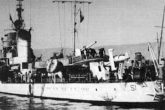
Torpedo boat Sirio. -
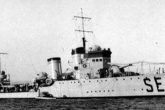
Destroyer Quintino Sella. -

The sinking of S/S Monrosa.Byron Tesapsides.Allied submarine operations in Greece during World War ll.1941-1944 -
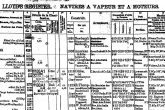
Document Lloyds with sinking S/S Monrosa. -
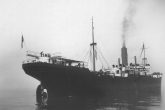
“Monrosa” (ex Intiano, ex Indus). -
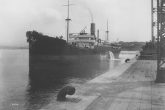
“Monrosa” (ex Intiano, ex Indus). -
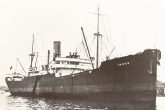
“Monrosa” (ex Intiano, ex Indus). -

HMS Triumph. -
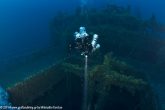
Ship bridge and hold. -
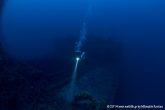
Deck of the wreck S/S Monrosa. -

The bow of the wreck S/S Monrosa. -
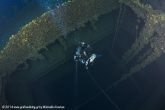
Hold of the shipwreck S/S Monrosa. -

In the midle of the ship. Foto by Ali Fikree -
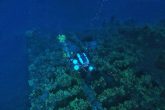
In the midle of the ship. Foto by Ali Fikree -

Video 01 The video was taken in 2003 with analogue video camera. The housing had been constructed in lathe. -

Video 02.From the Monrosa shipwreck. -

Video 03.From the Monrosa shipwreck. -

Video 04 from the Monrosa shipwreck. -

Video 05 from the Monrosa shipwreck.
Cargo ship S/S Monrosa
In July of 2003 in the open sea of Anavissos, after serious and intense research using a sonar underwater system (dip meter), the exact spot of the cargo ship “Monrosa” was detected by Antony Grafas. It is mentioned the Italian cargo steam ship “Monrosa” (ex Intiano, ex Indus), with a volume of 6703 gross registered tonnage, a total length of 428 feet, constructed in 1920 at J. Coughlan & sons shipyard, belonging to Navigazione Alta Italia Soc.anon company, on 25/10/1941, escorted by some destroyers, was heading to Piraeus without cargo, when it was fired upon by the English submarine HMS Triumph with 3 torpedoes. The destroyers tried to sink the submarine but the latter managed to dive and disappear from their sight. On Sunday, 3 August 2003, the first dive took place in order to record and collect information from the wreck and its location at the sea bottom.
The wreck is sitting on the sea bottom with its bow towards the south and its stern to the north. There is a big hole on the left side of the ship, low, near the stern at a depth of 85 meters, caused by a torpedo. Two big faults have been noticed: the first one is at the stern starting from the right side of the ship and the second one is at the right side of the ship near the center. The anchors are in their mooring position, and from the left side of the bow there is a rope, probably thrown by the crew that tried to tow the ship.The wreck’s minimum depth is 70 meters and the maximum is 90 meters, where the ship bottom is resting. At this wreck, no victims had been mentioned.
Sources
Christos Ntounis wrecks at Greek seas 1900-2000 volume A
Antonis Koiverakis,Kostas Thoctaridis.
http://uboat.net/allies/warships/ship/3488.html
http://www.photoship.co.uk/
Byron Tesapsides.Allied submarine operations in Greece during World War ll.1941-1944 [email protected]
Hms Triumph
Builder: Vickers Armstrong, Barrow
Laid down: 19 March 1937
Launched: 16 February 1938
Commissioned: 2 May 1939
Fate: sunk 14 January 1942
Badge:
TRIUMPH badge-1-.jpg
General characteristics
Class & type: British T class submarine
Displacement: 1,090 tons surfaced
1,575 tons submerged
Length: 275 ft (84 m)
Beam: 26 ft 6 in (8.08 m)
Draught: 16.3 ft (5.0 m)
Propulsion:
Two shafts
Twin diesel engines 2,500 hp (1.86 MW) each
Twin electric motors 1,450 hp (1.08 MW) each
Speed:
15.25 knots (28.7 km/h) surfaced
9 knots (20 km/h) submerged
Range: 4,500 nautical miles at 11 knots (8,330 km at 20 km/h) surfaced
Test depth: 300 ft (91 m) max
Complement: 59
Armament:
6 internal forward-facing torpedo tubes
4 external forward-facing torpedo tubes
6 reload torpedoes
4 inch (100 mm) deck gun
Description wreck
The ship is at an upright position on the sea bottom, the bow at a north axis and the stern at a south axis. The anchors are at their position. A huge crane is still in place waiting to load and unload the big three-level holds of the ship. Most of the ship is intact with some small damages to its superstructure. Ropes, small iron pillars and materials compose the scenery of the wreck at the part of the bridge. The biggest damage to the ship has been done at the bow section. On the right side with a direction towards the bow there is a crack as well as on the left side with a direction to the stern, as it is obvious from the video, and all these have most probably been caused from the submarine’s torpedo that struck it.
The bow has suffered the biggest damage as some parts of its superstructure have been demolished. On the right side there is a huge crack. The ship was hit by the submarine at the bow. It sank by hitting this part of the ship first and that is why most damages are apparent there. The propeller and the rudder are not visible, because either they are stuck in the sand or they have been destroyed by the sinking. In any case, Monrosa is big and gracious, ready to offer the visitor unique moments of thrill and emotion. It requires its visitor to swim around, unveiling both its obvious and hidden parts.

